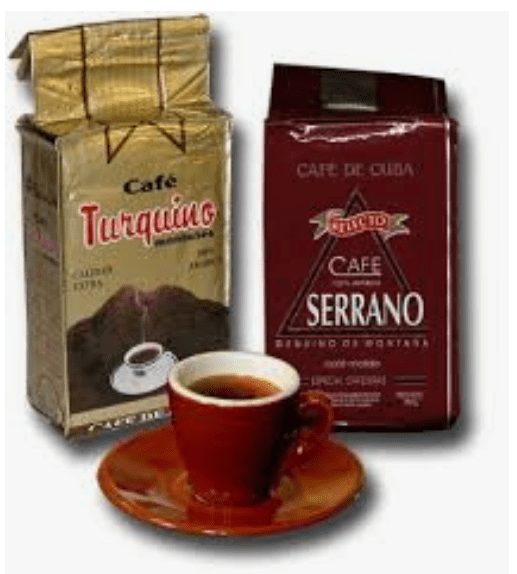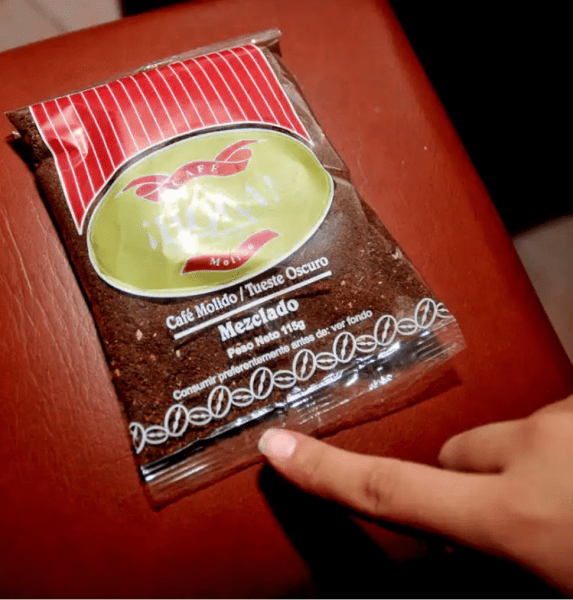We Love Our Coffee, Yet It’s Pretty Much Banned
By Safie M. Gonzalez

HAVANA TIMES – Coffee is much more than a drink to help us Cubans kick start off the day. It’s an excuse to meet with someone, a social get together. If somebody comes to visit you at home, the tradition is to offer them a steaming hot cup of coffee.
To us there’s nothing like pure Cuban coffee. However, unfortunately, most Cubans cannot enjoy this coffee, it’s simply out of our reach. This might be something many of you did not know.
Cuban coffee enjoys international fame. Countries like Japan and France take delight in our black nectar. In today’s Cuba, 90% of the coffee grown is in the provinces of Guantanamo, Santiago, Granma and Holgun. Santiago is the leading producer. In the center of the island Sancti Spíritus, Cienfuegos and Villa Clara account for 7%, while in the west, Pinar del Rio and Artemisa produce 3%.
The coffee tree was introduced by Jose Antonio Gelabert in the 18th century. Later, French colonialists imported their own production methods. When the Cuban Revolution took place in 1959, Cuba was an important exporter of coffee.
But in the early 1960s, the Cuban coffee industry took a huge dive after nationalization and the US trade embargo, which is perhaps why many Western countries haven’t had the privilege of enjoying a delicious cup of Cuban coffee.
Cubita, Serrano, Regil, Arriero, Turquino and more recently Guantanamera, are some of the marketing brands of Cuban coffee, sold to the public at US dollar equivalent prices but in our two local currencies.
The coffee / chickpea blend

Hola is a coffee sold in bodega stores, via the ration booklet. This coffee is mixed with ground chickpeas. Over time, the percentage of chickpeas has increased and sometime, this Hola coffee neither smells or tastes like coffee.
Always making magic with thin air, Cubans buy a packet of pure coffee (when they can) and mix it with Hola. This way, they are able to make it last longer and give it a little more aroma and flavor of a fine cup of Cuban coffee.
With this global crisis because of the pandemic, all kinds of coffee have disappeared from “normal” stores. Now you can only find it in the new dollar stores. Anyone unable to buy it will have to make do with the Hola packet named after a greeting. However, it is more than a greeting, it’s a farewell to our true coffee.






Just in case any reader is confused by Stephens description of Tim Horton’s Canadian coffee. Horton’s a US owned company purchases all its coffee from other countries, Canada does not produce a single bean. I can readily accept that Stephen and indeed many others who visit Tim Horton’s for coffee, are not coffee connoisseurs, the same applies to those who line up in their cars to purchase McCafe from McDonald’s, another US company with outlets all over Canada – and much of the planet – and a well known source of litter. A third US company, Starbucks, sells a slightly better quality, but charges heavily. All the coffees concerned are imported, then roasted. Italian coffees are also imports. Roasting is the real art ! Cubita, Serrano and other Cuban coffees are both grown and roasted in Cuba.
Well I can just walk into a store in Canada and buy unlimited quantities of Cubita coffee – in either 460 or 920gm black packets! The 460gm packets cost $10.20 Canadian ($7.50 US) and the 960 packs $19.99 Canadian. But when at home in Cuba it is a different story !
But why would the Castro regime care whether Cubans can buy coffee ?
First, let me say, I love Cuban coffee. Along with my Cuban cigars, I could be accused of bordering on smuggling these products into the US each time I return from a trip to Cuba. That said, not accounting for personal preference, Cuban coffee is NOT considered by coffee aficionados as being among the best tasting. Like Cuban cigars, at least part of the hype is owed to Cuban coffee’s limited availability. Like nearly everything else in Cuba, it’s limited availability is because of poor resource management. That said, I can also be accused of scheduling my return visits to Cuba to coincide with when I expect to run out of Cuban coffee and cigars so, yes, I am a fan. But the truth? Cuban coffee is no big deal. By the way, in an earlier comment, the coffeemaker most Cubans use to make their stovetop coffee was described as a “Cuban” coffee pot. It’s not Cuban. It’s Italian.
You Have Never Had Cuban Until you Roast your Own From Green, Sun Dried & Slow wood Fire Roasted. The Smoke, Just stand up Wind.
Cafe Bustello is one of the most popular espresso type coffees here in South, Florida and, it brews very well in the Cuban type of stovetop coffee pot.
Hopefully, after our election, we can figure out a way to ship a bunch of packages to you.
Both of my visits to CUBA I perceive were serving Cuban coffee to enjoy. Sometimes it was a bit strong and I needed a pot of hot water to delute it some since I drink it Black. But I did enjoy it after coming back home with a purchase at the airport upon my departure.
Here in the USA it is easy to acquire and enjoy a cup of coffee to get your day going. Whether it is in fast restauants, coffee shops or other sit down restaurants. We even have it available at gas stations and in grocery stores where there are cafes. I wish the people of Cuban had that same option.
I love Cuban coffee, it has a very special aroma which is mile but detectable with little efforts. It is not as bitter as Italian dark roast and not as sour as Sumatran. I always buy coffee on my way back from Cuba, at the airport. I don’t mind Tim Horton coffee but really like Starbucks. I really hope that one day we can see those coffee shops in Cuba!
Ahhh….yes…the aroma of a freshly brewed cup of Cuban coffee made with Cubita brand coffee grounds slowly slurped is simply, soothing, savory, and very satisfying. A delightful welcome to any visitor to the island who needs or savors a caffeine fix.
It is a shame Cubans who used to buy and drink coffee regularly because it was widely available have been denied that simple pleasure, through no fault of their own, from enjoying their national black liquid treasure.
Whenever I have the opportunity to visit friends in Cuba, I always bring to them a couple of bags of Tim Horton’s ground coffee. In Canada, Tim Horton’s coffee and its associated restaurants offer not only brewed coffee but also pastries, sandwiches and other assorted menu items and the famous brand is the Canadian equivalent to Cuban coffee, at least in the name of coffee.
Anywhere in Canada from the extreme west coast of British Columbia to the most eastern maritime village in Newfoundland; from the extreme northern latitudes to the most southern populous cities, every town and city, has a least one Tim Horton outlet selling this Canadian coffee. In the mornings, walk by or drive by any Tim Horton restaurant in Canada and one sees a line up of cars waiting to be self served all year long. It simply a sight to see . . . all for that morning “hit” of caffeine to start the day.
How does Tim Horton coffee compare with real Cuban coffee? I don’t know; I certainly am not a coffee connoisseur. But my Cuban friends say it is delicious. Whether they are saying that to please me and to ensure I continue to gift them with the ground brew on my visits, or maybe they are comparing the coffee to what they are presently drinking – a mixture of so called coffee made with chick peas. Must be awful!
They certainly can’t be comparing Tim Horton’s coffee with the flavorful Cubita black brand because Cubita brand is not readily available and is expensive to most Cubans. The only place I have seen Cubita brand coffee is at Cuban airports, well out of the reach of the majority of Cubans.
Hopefully in the future the rich, aromatic, flavorful, Cuban coffee makes a come back so that all Cubans can enjoy what their proud country has to offer the world. In the meanwhile, if you ever get a chance to meet a Canadian in Cuba ask them about Tim Horton’s coffee and you will receive a thumbs up, plus be recognized as a knowledgeable Canadian compatriot.